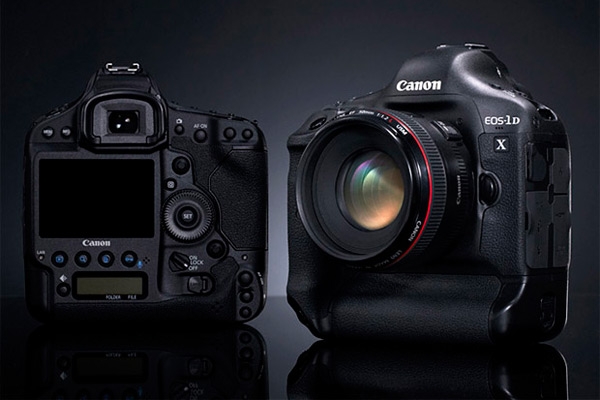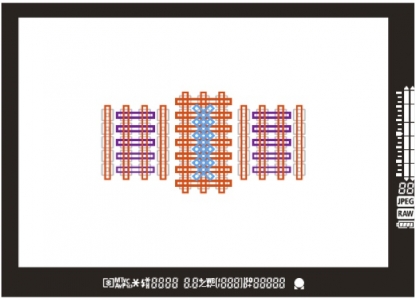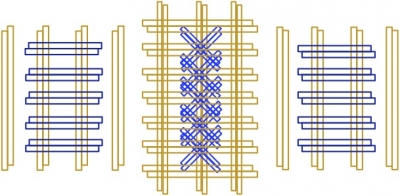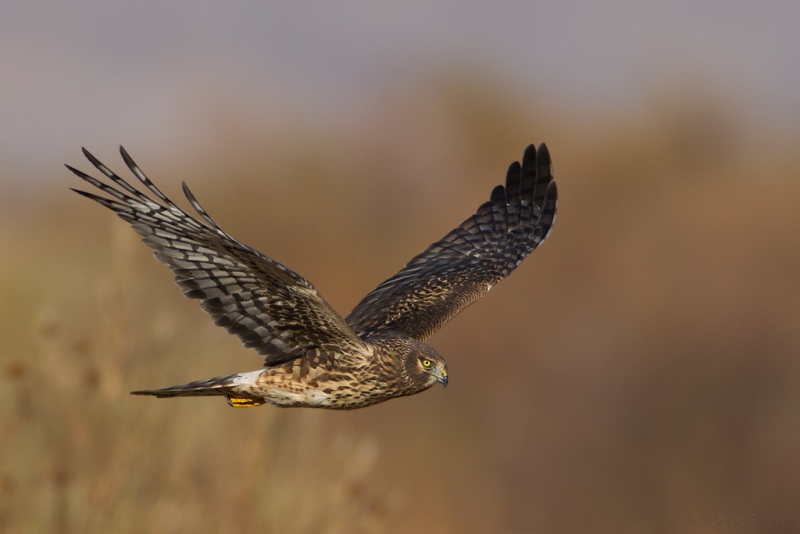|
The recently announced Canon EOS-1D X |
Canon’s Top Tech Rep on the EOS-1D X
A while back I ran Doug Brown’s insightful review of Canon’s newly announced professional digital camera body, the EOS-1D X. Click here if you missed “EOS-1D X Revelations” Doug followed that up with an interview with Canon’s top technical representative, Chuck Wesftall. Chuck’s formal title is: Advisor, Technical Information, ITC Group Professional Engineering & Solutions I Division, Canon U.S.A., Inc. I share that interview with you below. Tanks a stack to both Doug and Chuck.
Doug Brown is one of the new-school 600mm/1.4X/Mark IV hand holding flight photographers. (Count me out of that club.) Doug is quite skilled at it; he garnered his first BBC Veolia Wildlife Photographer of the Year Competition-honored image in last year’s contest. (You can see Doug’s honored photo here.) And be sure to visit Doug’s web site here. Be sure to check out the various galleries; there is tons of amazing stuff in them. Reprinted below, with his permission, is Doug Brown’s take on the new EOS-1D X.
Below, in its entirety, is the interview.
Yesterday morning I had the pleasure of speaking about the Canon EOS-1D x with Chuck Westfall, Canon USA’s Technical Advisor in the Professional Engineering and Solutions Division. In my questioning I tried to focus on the design decisions relevant to nature and wildlife photographers. A big thank you to Chuck for taking the time out from his busy schedule to answer my questions!
DB: Everyone is very excited about the new AF system in the EOS-1 Dx. Among wildlife photographers, the big concern is the loss of f/8 autofocus. Why did Canon choose to eliminate that feature?
CW: Canon felt that while it would have been nice to preserve AF at f/8, the overall improvement in AF achieved with the 1D x took precedence. The new AF system is faster, more controllable, and more intelligent. The improved algorithm means that AF won’t jump to the background as quickly, won’t be tripped up as easily by obstacles in front of the subject, and will handle subjects that are small in the frame much better. As you mention, AF is unavailable on the EOS-1D X if the maximum aperture reported to the camera through the electronic lens mount is smaller than f/5.6. This is a lower specification than previous EOS-1 series DSLRs. There are a lot of trade-offs in life, and this is one of them. Essentially, Canon Inc. decided that the overall improvement of the new 61-point AF system compared to the older 45-point system took precedence over the need for that particular feature. Taking your f/4 lenses as an example, with the new 1D X you now have 41 cross-type AF points (or 21 cross-types with the f/5.6 lenses) plus color and face detection tracking when using those lenses whereas there were none of those features with previous 1D/1Ds cameras. The AI Servo system on the new camera is vastly better than earlier cameras as well, in terms of sensitivity and performance as well as controlability.
DB: Does that mean that it’s not possible to AF at f/8, or that it’s not reliable but could be implemented? Could f/8 AF be enabled as a custom function?
CW: I have no further comment at this time, because Canon Inc. has not published answers to those questions.
DB: I’ve read that the new AF sensor covers a larger area than in previous Canon bodies; could you elaborate?
CW: The AF sensor is larger than in any earlier 1D/1Ds body, measuring 19mm from side to side. This compares to a 15mm-wide AF sensor in both the 1D Mark IV and the 1Ds Mark III.
DB: As a follow-up question, why hasn’t Canon placed AF points at the compositional power points dictated by the rule of thirds?
CW: In a phase detect AF system, it is impossible to spread the AF points out any further. If you were to place AF points at the compositional power points, they wouldn’t receive enough light to do their job properly. You would need an entirely new AF technology to make that possible.
DB: Could you tell us about the improvements that have been made in low-light and low-contrast autofocus?
CW: Low-light autofocus has been improved by a full stop compared to the 1D Mark IV. AF can be achieved at EV -2, the equivalent of locking focus under the light of a full moon. Low-contrast AF has also been significantly enhanced. Each AF point now has a double line of sensors in each direction (horizontal and vertical), and the lines are offset from one another. The result is that the AF sensor is much more sensitive to small changes in contrast than ever before. Lenses that can take advantage of the central f/2.8 sensors will see even better results. In our older systems, we used single lines of sensors, so no offset was possible.
DB: With the 1D x Canon has introduced a feature called EOS intelligent Tracking and Recognition AF (EOS iTR AF). What can you tell us about it?
CW: The AE system of the 1D x is able to detect the color of the subject, and can pass on this information to the AF system to improve subject tracking. To quote the Canon website “By using the colour of the subject that was initially focused, the AF system can track the movement of that subject, both by contrast and colour across the frame, and automatically select the most appropriate focus point given the position of the subject within the frame. This frees you up to concentrate on composing your images rather than selecting the best AF point for focus.”
DB: I’ve read that the AE and AF systems also incorporate face detection. Some wildlife photographers are concerned that face detection may confuse the AF system when photographing animals. Is there any way to disable the feature?
CW: The default AF mode is phase detect AF. Color and face detection is optional, but you can’t choose one or the other. It’s PDAF plus Color and Face Detection or PDAF only.
DB: What information do you have on the size of the 1D x buffer?
CW: At this point, no specs have been released on buffer size.
DB: How did Canon decide upon an 18 megapixel sensor for the 1D x?
CW: The Canon engineers felt that 18 megapixels struck the best balance between image quality and speed. Also they wanted the body to achieve 12 fps shooting, and that helped guide the decision on megapixels.
DB: Moving forward, has Canon dropped the APS-H sensor from its future plans?
CW: The 1.3 crop sensor is not being killed off. Canon is keeping all options open for future products.
DB: One of the advantages of moving to a full-frame sensor with a relatively low megapixel count is an improvement in high ISO noise levels. Canon is claiming a two stop gain in high ISO performance when compared to the 1D Mark IV. Will we see the full two stops when shooting RAW files, or is this limited to JPEG files only?
CW: To get the full two stops of improved performance you’ll need to shoot in the JPEG format. That’s not to say that high ISO performance isn’t significantly better when shooting in RAW, because it absolutely is.
DB: Will the new electronic first curtain replace mirror lock-up?
CW: The electronic first curtain only works in Live View, so it does not replace MLU. It does however offer a significant reduction in camera vibration when used in conjunction with Live View. The performance gains are most noticeable at very long focal lengths (800mm and longer).
DB: Is there a way to easily access the mirror lock-up function in the 1D x?
CW: The 1D x brings custom shooting modes (C1, C2, and C3) to the 1-series EOS bodies. These modes allow you to store regularly used settings for quick recall. Mirror lock-up can be programmed to any one of these custom shooting modes. You can also place mirror lock-up in My Menu. And don’t forget that Live View effectively provides one-touch mirror lock.
DB: Why the new battery, and what are its performance specs?
CW: The new battery was designed to meet some new safety requirements from the Japanese government. The new battery has slightly more capacity than the 1D Mark IV/ 1Ds Mark III battery, and there is complete forward-and-backward compatibility for LP-E4 and LP-E4N battery packs with the 1D x and 1D/1Ds Mark III as well as 1D Mark IV cameras. Canon has not released performance specs yet on the new battery.
DB: Some nature and wildlife photographers feel like Canon is ignoring their input in the design of new camera bodies. How do you address these concerns?
CW: Canon is very cognizant of the importance of the nature and wildlife segment when designing new camera gear.
DB: Canon’s Digital Photo Professional software does an excellent job handling high ISO noise, where products such as Adobe’s Lightroom seem to struggle. Why doesn’t Canon license their RAW processing engine to other software makers?
CW: Canon has an SDK that includes its RAW processing engine that is freely available to other software vendors. To my knowledge no other software maker has chosen to utilize our NR algorithm.
DB: What about the bounding box around the histogram?!?!
CW: Canon is aware that this feature has been requested. It was found in the original EOS-1D, but vanished in subsequent generations. You can enable a live histogram that stands out very clearly from the background in Live View.
|
Northern Harrier female in flight. Image copyright 2011 and courtesy of Doug Brown Photography. Canon EOS-1D Mark IV, 600mm f/4L IS + 1.4x. Manual exposure, hand held. |
Thanks again to both Doug Brown and Chuck Westfall. I am posting this from the Orlando Airport. I will be home in two hours :).


















Well, I’m hoping some of this improved technology makes it to the 7d Mark II or whatever Canon’s next top-level APS-C camera is called. I’m usually focal-length limited, and always budget limited 🙂 , and so I don’t see a 1DX in my future, but I can iomagine a 7D II.
David
Thanks a ton Doug and Artie for sharing this very informative and interesting interview!!
A truly remarkable Northern Harrier!